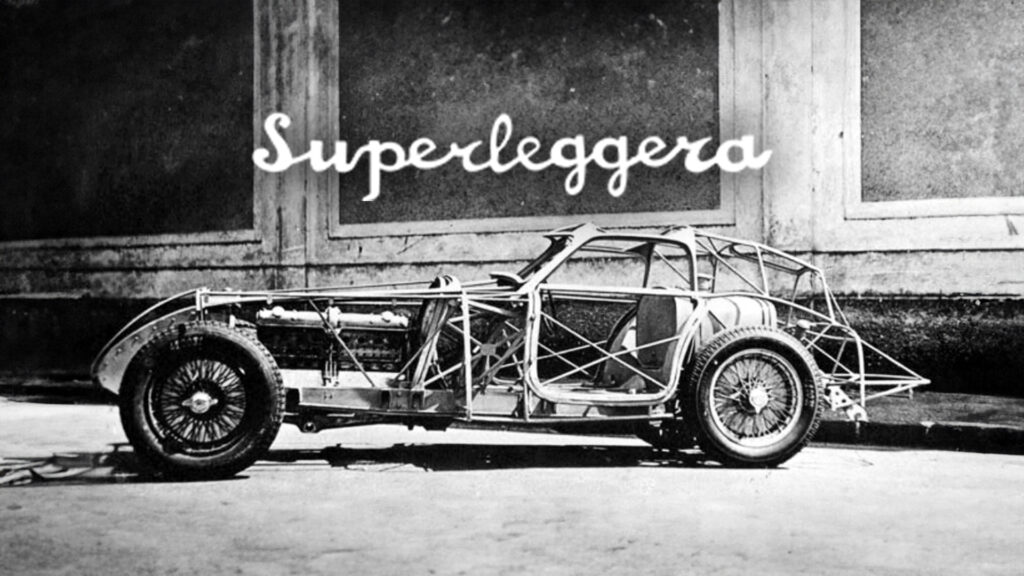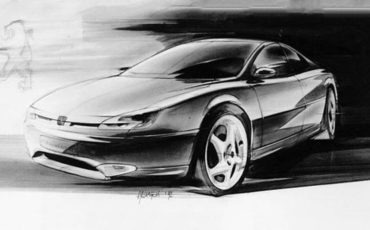
The Superleggera system, developed by Carrozzeria Touring of Milan, stands as one of the most innovative achievements in the history of automotive design. This revolutionary construction method, guided by the motto “Weight is the enemy – Air resistance is the obstacle,” was more than just a new way of building cars; it was a transformative approach that redefined car manufacturing, blending cutting-edge engineering with elegant aesthetics.
Origins and Development
Founded in 1926 by Felice Bianchi Anderloni, Carrozzeria Touring quickly became known for its sleek, stylish automotive designs. However, by the mid-1930s, Touring sought to go beyond mere aesthetics and address the technical challenges of traditional coachbuilding methods. At the time, most cars were built using heavy wooden frames, a legacy of horse-drawn carriage construction that was both cumbersome and not particularly strong.
Touring initially adopted the Weymann system, which allowed lighter construction by replacing steel panels with fabric-covered wooden frames. Despite offering some advantages, this system had significant drawbacks, including the tendency of the pegamoid fabric to dry out and crack. Undeterred, Touring’s engineers took inspiration from the aeronautical industry, developing the Superleggera system around 1935-36—a breakthrough that forever changed automotive design.
The Superleggera Technique
The Superleggera (Italian for “super light”) technique was a groundbreaking step in automotive construction. It utilized a light yet strong tubular steel framework over which thin aluminum panels were attached to form the body of the car. This innovative structure, directly welded to the main chassis, unified the body and frame into a cohesive unit, dramatically reducing weight while enhancing strength and rigidity.
The steel frame was made from carefully engineered tubes, providing structural support without the weight of traditional wooden frames. Aluminum panels were mounted using felt inserts to minimize vibrations and prevent galvanic corrosion, making the vehicles not only lighter but also more durable and safer. This construction method aligned perfectly with Touring’s goals of reducing weight, improving speed, and enhancing handling, setting new standards in performance.
Technical Advantages of the Superleggera System

1. Lightweight Construction: The primary advantage of the Superleggera system was its ability to significantly reduce the vehicle’s weight. By eliminating heavy wooden frames and using a tubular steel structure covered in aluminum, Touring’s designs were lighter, faster, and more fuel-efficient. This weight-saving approach was particularly crucial in racing, where every kilogram impacted performance.
2. Enhanced Aerodynamics: Touring’s emphasis on aerodynamics set it apart from its contemporaries. The streamlined shapes made possible by the Superleggera system minimized drag, allowing cars to achieve higher speeds and improved stability. Touring was a pioneer in using wind tunnels to test their designs, ensuring that each car was as aerodynamically efficient as possible.
3. Structural Integrity and Safety: Unlike the Weymann system, which was prone to weather damage and structural weakness, the Superleggera construction provided superior rigidity and safety. The combination of steel and aluminum created a durable framework that offered excellent crash resistance, enhancing the overall safety of the vehicle.
4. Flexibility in Design: The Superleggera technique provided designers with unmatched freedom to create complex, flowing shapes that were impossible with traditional construction methods. This flexibility allowed Touring to craft bespoke bodies that perfectly matched the client’s desires, setting a new benchmark for custom automotive design.
5. Integration of Advanced Materials: Touring incorporated advanced materials such as Plexiglas windows, tubular seat frames, and chrome-plated aluminum trim. These innovations further reduced weight and enhanced the visual appeal of the cars, contributing to their overall performance and luxurious feel.
6. Unified Chassis and Body Construction: The Superleggera system unified the car’s chassis and body into a single, cohesive unit. This concept of integrating body and frame enhanced structural integrity and was a precursor to the monocoque (unibody) construction that would later become standard in the automotive industry.
Landmark Models Built with the Superleggera System
The first major application of the Superleggera system was on the Alfa Romeo 6C 2300 B MM, which made its debut at the Mille Miglia in 1937. This car showcased the effectiveness of the new construction method, achieving an impressive fourth-place finish and setting the stage for future Touring designs.

Another significant milestone was the creation of the Alfa Romeo 8C 2900 B, regarded as one of the most beautiful and technologically advanced cars of its time. Featuring an eight-cylinder engine and a sophisticated aerodynamic design, the 8C 2900 B set new standards for performance and luxury. Touring also utilized the Superleggera technique on various Fiat and Lancia models, demonstrating the system’s versatility across different platforms.
BMW and the Mille Miglia Victory
Touring’s expertise did not go unnoticed by other leading car manufacturers. In the late 1930s, BMW approached Carrozzeria Touring to design a lightweight, aerodynamically optimized body for their racing cars. The collaboration resulted in the BMW 328 Mille Miglia Touring Coupé, a car that combined BMW’s advanced mechanical components with Touring’s cutting-edge Superleggera construction.
The BMW 328 Mille Miglia Touring Coupé was a technical marvel, utilizing the lightweight Superleggera system to achieve remarkable performance. Its streamlined aluminum body was mounted on a tubular steel frame, dramatically reducing weight and allowing the car to maximize its power output. This synergy between BMW’s engineering and Touring’s design led to a stunning victory at the 1940 Mille Miglia, where the 328 Touring Coupé won outright, cementing the Superleggera system’s reputation as a superior automotive construction method.

The success of the BMW 328 at the Mille Miglia was a testament to the advantages of the Superleggera system, proving that lightweight construction and aerodynamic efficiency could deliver winning results on the world’s toughest racing stages. The BMW 328 Mille Miglia Touring Coupé remains a legendary car, often celebrated as one of the most beautiful and effective racing cars of its era.
Legacy and Impact of the Superleggera System
The impact of the Superleggera system extended far beyond Touring’s workshop. Its success led to licensing agreements with other prestigious manufacturers, including Aston Martin, Frazer-Nash, and Hudson, allowing them to adopt Touring’s innovative construction techniques. This spread of the Superleggera system influenced automotive design globally, helping to usher in an era of lighter, faster, and more elegant cars.
The Superleggera system was not just a technical innovation; it was a philosophy that harmonized engineering excellence with artistic design. It prioritized lightness, strength, and aerodynamics, creating vehicles that were as beautiful as they were fast. Today, the principles established by Touring’s Superleggera system continue to inspire car manufacturers striving to balance performance, safety, and style.
In conclusion, the Superleggera system by Carrozzeria Touring remains a pivotal moment in automotive history. It redefined car design by integrating advanced construction techniques with aesthetic mastery, setting a new standard for what cars could achieve. The enduring legacy of the Superleggera system is a reminder that true innovation often comes from rethinking the fundamentals, blending form and function into a masterpiece of automotive art.





